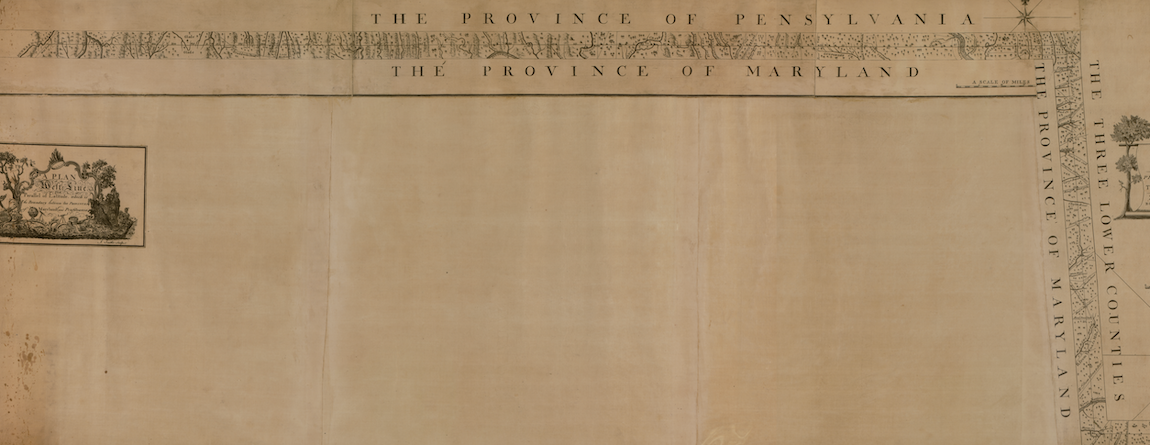This article describes the ongoing dispute between the colonies of Maryland and Pennsylvania over the land that would eventually become Delaware.
A Plan of the West Line or Parallel of Latitude" by Charles Mason, published in 1768
Introduction
The history of Delaware is often linked with the boundary dispute between Pennsylvania and Maryland, a conflict that spanned decades and had profound implications for the governance and identity of the region. The struggle for control over Delaware not only reflected the territorial ambitions of the two colonies but also highlighted broader issues of colonial rivalry, legal interpretation, and political power in early America.
The Origins of the Dispute
The origins of the boundary dispute can be traced back to the colonial charters granted by the English crown. Both Pennsylvania and Maryland were founded under charters that included vague and ambiguous descriptions of their boundaries, leading to overlapping territorial claims.
The Role of William Penn and Lord Baltimore
William Penn, the founder of Pennsylvania, and the Calvert family, who controlled Maryland, were central figures in the boundary dispute. Penn and the Calverts both sought to expand their territories and maximize their land holdings, leading to frequent clashes over the boundaries between their respective colonies. Despite attempts at negotiation and compromise, the dispute remained unresolved for decades. Penn wanted an outlet to the sea for his colony and believed he has been granted a lease for the land leading to this outlet referred to as the 12-mile Circle. Lord Baltimore, however, disagreed, and the issue remained unsettled.
Legal Battles and Political Maneuvering
The boundary dispute between Pennsylvania and Maryland played out in a series of legal battles, political maneuvers, and even occasional outbreaks of violence. Both colonies enlisted the support of influential allies in England, lobbied the crown for favorable rulings, and sought to undermine each other's claims through legal challenges and legislative tactics. However, the lack of clear delineation in the colonial charters made it difficult to reach a definitive resolution.
The Establishment of the Mason-Dixon Line
he turning point in the boundary dispute came with the involvement of two English surveyors, Charles Mason and Jeremiah Dixon, who were commissioned to survey and mark the boundary between Pennsylvania and Maryland. Their efforts resulted in the creation of the famous Mason-Dixon Line, a survey line that would come to symbolize the division between the North and South in American history. While the Mason-Dixon Line resolved many of the boundary issues between Pennsylvania and Maryland, it also perpetuated the institution of slavery by establishing a clear dividing line between free and slave states.
Related activities
Advertisement


